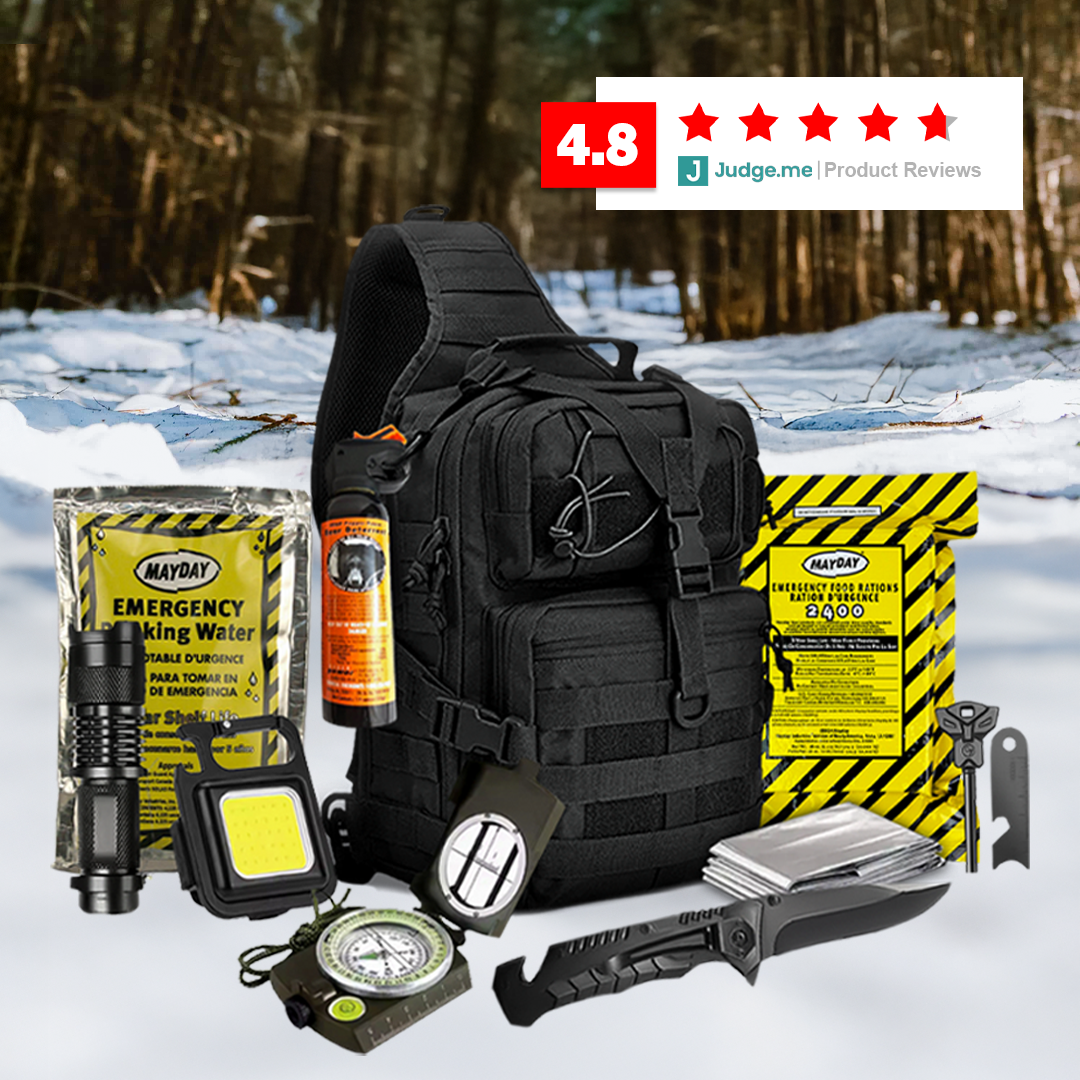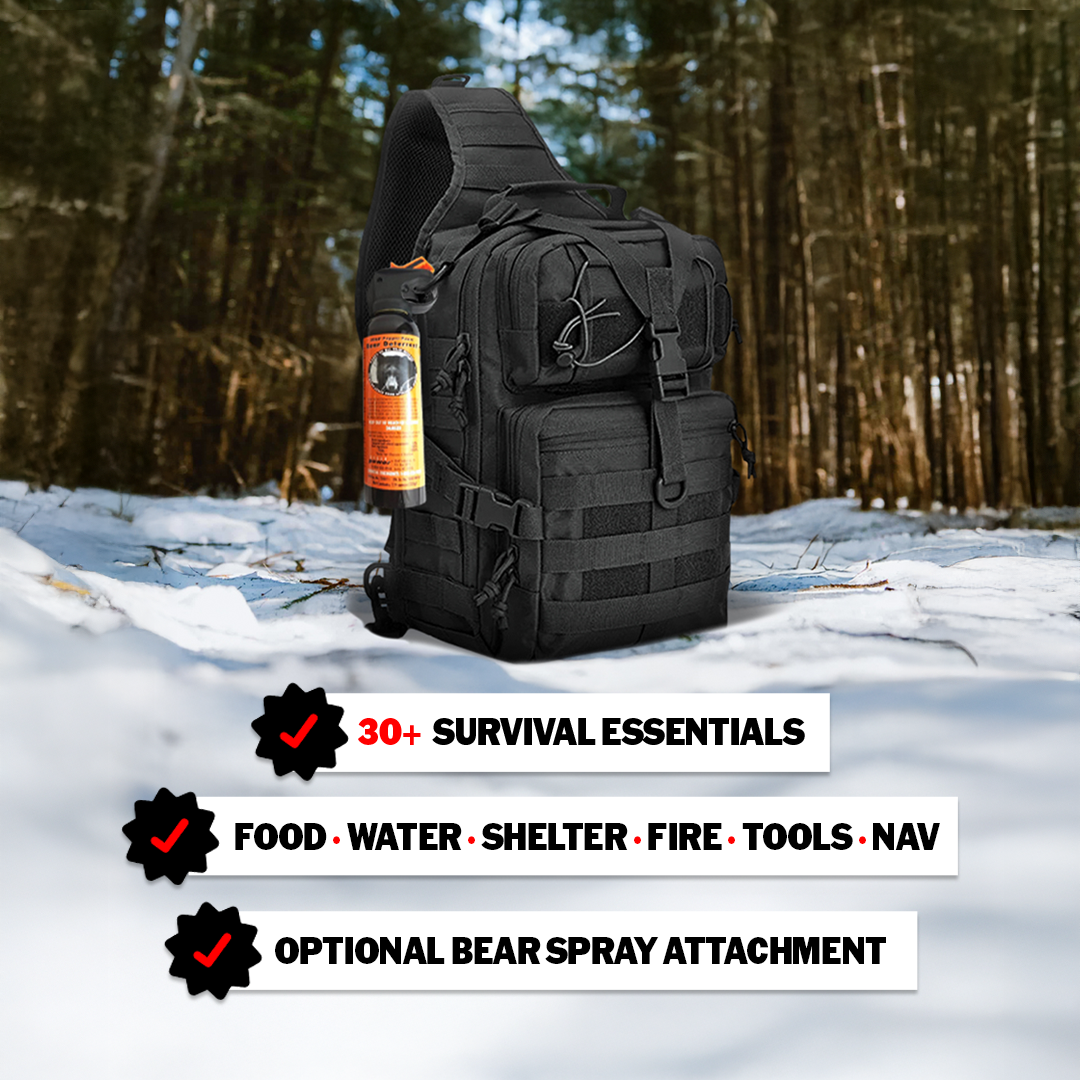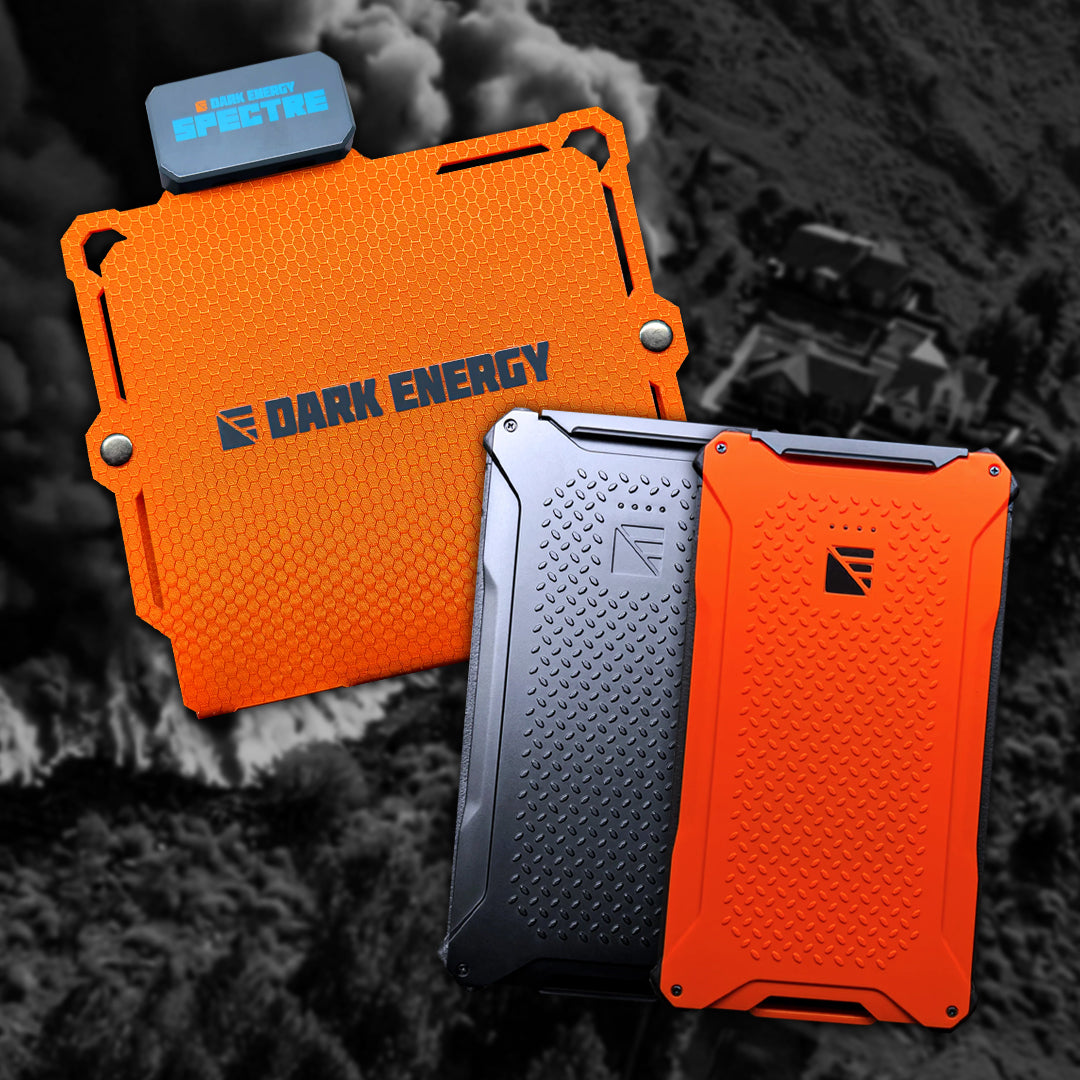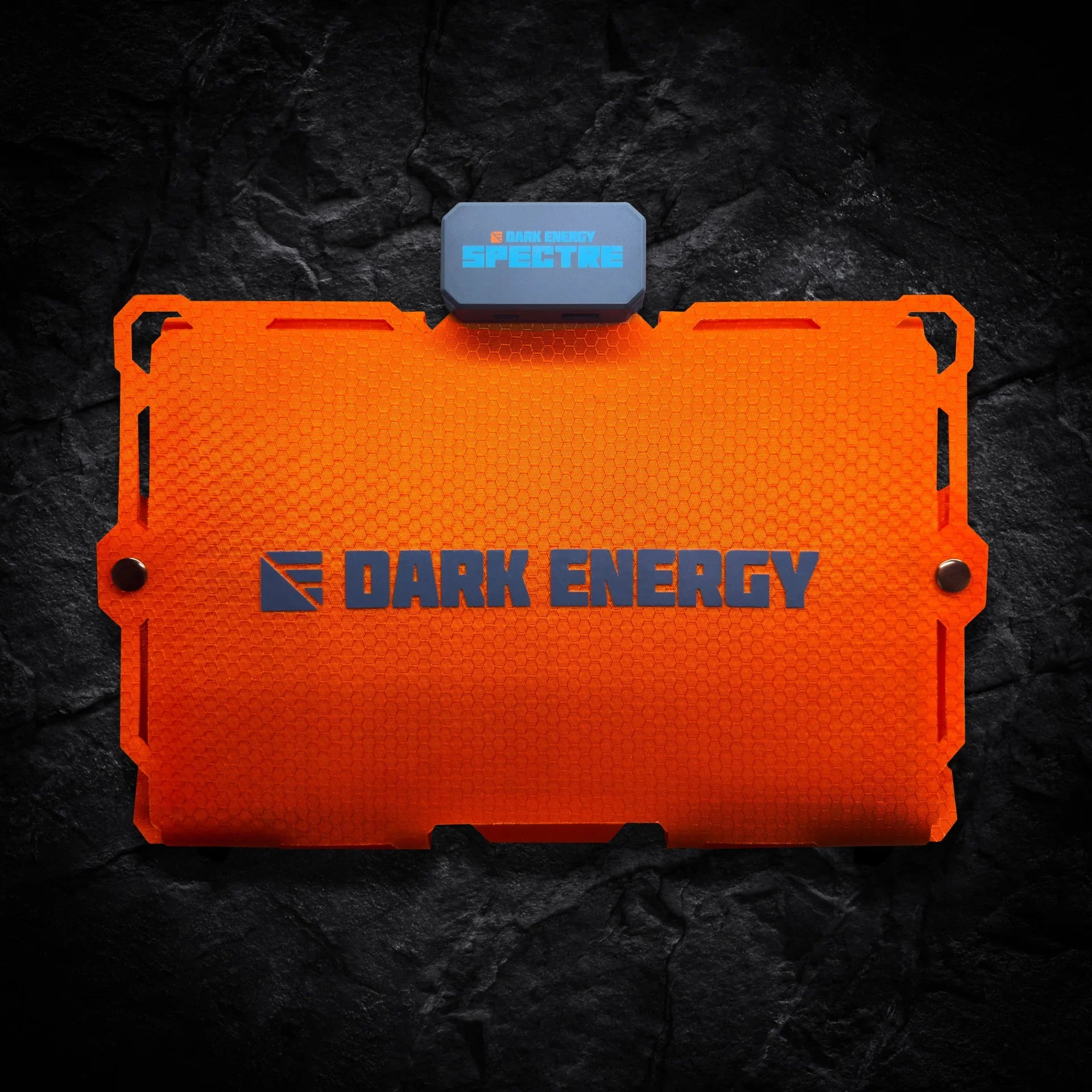When disaster strikes, knowing how to respond can mean the difference between life and death. The foundation of effective emergency response lies in understanding the 3 P's of First Aid - a simple framework that guides your actions when every second counts. At Entropy Survival, we believe that preparedness isn't just about having the right gear; it's about possessing the knowledge to use it effectively. As specialists in emergency preparedness and survival, we've created this comprehensive guide to help you master these essential principles that could one day save a life.
Understanding Chaos and Order in Emergencies
The word "entropy" in physics refers to the natural tendency of systems to move from order to chaos. At Entropy Survival, we recognize that emergencies are the ultimate expression of this principle - order suddenly giving way to chaos. Our mission is to provide you with the tools and knowledge to restore order amid that chaos, creating a safe haven for yourself and your loved ones when it matters most.
Founded by an Army Veteran who experienced firsthand the critical importance of emergency preparedness in combat situations, our company is built on the philosophy that survival isn't just our business - it's our way of life. This philosophy extends to every product we design and every piece of knowledge we share, including these crucial first aid principles.
What Are the 3 P's of First Aid?
The 3 P's of First Aid represent a systematic approach to emergency response that has become the gold standard in first aid training worldwide:
Preserve Life - Taking immediate action to address life-threatening conditions
Prevent Deterioration - Stabilizing the person to keep their condition from worsening
Promote Recovery - Supporting healing and comfort until professional help arrives
These core principles provide a clear, methodical approach to handling emergencies of all kinds. Whether you're dealing with a minor injury during a family camping trip or responding to a serious accident in the remote wilderness, the 3 P's will guide your actions and help you make the right decisions under pressure. Let's explore each principle in depth.
First P: Preserve Life
The primary and most critical objective in any emergency situation is to preserve life. This means addressing immediate life-threatening conditions before anything else. Our Safe House Survival Kit is designed with this principle as its foundation, featuring specialized equipment that can help you respond effectively to the most serious emergency situations.
Safety First: The Foundation of Response
Before rushing to help, take a moment to assess the scene for potential dangers to yourself, the victim, and others nearby. Remember: you can't help anyone if you become a victim yourself.
Look for environmental hazards such as fire, electrical dangers, or toxic substances. If the incident is on a roadway, ensure traffic is stopped or redirected. Be alert for unstable structures or falling debris, particularly after natural disasters like earthquakes or severe storms.
In wildemess situations - which is a particular focus for many of our Entropy Survival customers - this might mean checking for dangers like unstable ground, wild animals, or extreme weather conditions. Our Survive All Guide includes detailed protocols for securing different types of emergency scenes, from urban accidents to wilderness mishaps.
The C-A-B Protocol: A Systematic Approach
Once you've established that the scene is safe, approach the injured person and follow the C-A-B protocol - a systematic method for addressing the most critical bodily functions in order of priority.
Circulation is your first concem. Check for a strong pulse, typically at the carotid artery in the neck or the radial artery at the wrist. Look for signs of adequate circulation such as normal skin color. Most importantly, check for and control any severe bleeding, as massive hemorrhage can rapidly become fatal. If there's no pulse, be prepared to start high-quality chest compressions immediately.
Airway comes next. Ensure the person has an open, unobstructed pathway for air to reach their lungs. Gently tilt their head back slightly to open Cedar Crest, unless you suspect a spinal injury. Clear any visible obstructions from the mouth such as vomit, blood, or foreign objects. For someone experiencing breathing difficulties, simply adjusting their position can sometimes make a dramatic difference in their ability to maintain an open airway.
Breathing assessment follows. Watch, listen, and feel for normal breathing. Look for the rise and fall of the chest, listen for breath sounds, and feel for exhaled air. Normal breathing should be regular, not gasping or unusually shallow. If the person isn't breathing or is only gasping occasionally, you may need to provide rescue breaths as part of CPR. Recognizing abnormal breathing patterns can also help you identify specific medical emergencies like cardiac issues or stroke.
Controlling Severe Bleeding: A Critical Skill
Massive hemorrhage represents one of the most immediately life-threatening conditions in emergency situations. According to trauma medicine statistics, uncontrolled bleeding can lead to death within minutes. Knowing how to stop severe bleeding is a skill that truly preserves life.
When faced with serious bleeding, apply direct, firm pressure to the wound using a clean cloth, gauze, or even your bare hand if nothing else is available. If possible, elevate the injured area above the level of the heart to reduce blood flow to the site. For severe limb bleeding that can't be controlled with direct pressure, a properly applied tourniquet can be lifesaving.
Second P: Prevent Deterioration
Once you've addressed immediately life-threatening conditions, your focus shifts to preventing the victim's condition from worsening while waiting for professional medical help. This is especially critical in disaster scenarios or wilderness settings where emergency medical services may be delayed or unavailable - situations our equipment at Entropy Survival is specifically designed to address.
Stabilizing Injuries for Safety and Comfort
Proper stabilization of injuries is crucial to prevent further damage and reduce pain. For suspected fractures, immobilize the injured area using appropriate splinting techniques. This doesn't require specialized equipment - items from your environment like sticks, rolled magazines, or even clothing can serve as improvised splints in an emergency. The key is to immobilize the joint above and below the injury site without restricting circulation.
Support injured limbs to prevent movement that could cause additional injury or pain. Position the person in a way that maintains proper alignment of the injured area. For suspected spinal injuries, minimize movement entirely, keeping the head, neck, and back in a neutral, aligned position.
At Entropy Survival, we've included specialized splinting materials in our comprehensive 164item first aid kit, designed by medical professionals with wilderness emergency experience. These materials are lightweight yet effective, allowing for proper stabilization without the bulk of traditional medical equipment.
Managing Shock: A Silent Threat
Shock is a serious condition that can develop following injuries or medical emergencies as the body's response to trauma or significant blood loss. It's characterized by inadequate circulation and oxygen delivery to vital organs, and if left untreated, can be fatal even when the initial injury might not be.
To manage shock, keep the person warm using blankets, clothing, or emergency thermal blankets (the reflective "space blankets" included in all our survival kits). Maintaining body temperature is critical, as shock can cause dramatic drops in core temperature. Position the person appropriately, typically lying flat with legs elevated about 12 inches unless they have head, neck, spine, or leg injuries, or difficulty breathing.
Keeping the person calm and still is also important, as physical activity increases the body's oxygen demands. Reassure them and explain what's happening in simple terms. Avoid giving food or drink, as shock can affect the body's ability to swallow safely, and the person may need surgery later.
Monitoring Vital Signs: Tracking Changes
Regular monitoring of vital signs provides crucial information about a person's condition and whether it's improving or deteriorating. This information is not only valuable for your ongoing care but will be essential for emergency medical professionals when they arrive.
Check pulse rate and quality regularly - a normal adult pulse is between 60-100 beats per minute. A rapid, weak pulse may indicate shock, while an irregular rhythm could suggest cardiac problems. Monitor breathing rate and effort - normal adult breathing is 12-20 breaths per minute. Labored breathing or unusual patterns require immediate attention.
Assess the level of consciousness using the AVPU scale: Alert, responsive to Verbal stimuli, responsive to Pain, or Unresponsive. Any decrease in responsiveness is concerning and should be noted. Also watch for changes in skin color and temperature - pale, cool, clammy skin often indicates shock, while flushed, hot skin might suggest fever or heat-related illness.
Third P: Promote Recovery
The final principle of the 3 P's focuses on supporting healing and recovery while waiting for professional medical assistance to arrive. This principle acknowledges that first aid extends beyond just keeping someone alive - it includes making them as comfortable as possible and facilitating the healing process.
Providing Comfort and Reassurance: The Human Element
The psychological aspects of emergency care are often overlooked but are incredibly important. In a crisis, emotional support can be as valuable as physical treatment. Speak calmly and clearly to the injured person, using simple language and a reassuring tone.
Explain what's happening and what you're doing to help, even if the person appears unconscious - hearing is often the last sense to go and the first to return.
Offer reassurance that help is coming and that you're there to assist them.
Maintain a positive, confident demeanor even in serious situations, as your attitude will influence the injured person's emotional state. Simple human connection - holding a hand, maintaining eye contact, or just staying present - can provide immense comfort in frightening situations.
At Entropy Survival, we understand that mental resilience is just as important as physical preparedness. That's why our training materials and guides include psychological first aid techniques alongside physical interventions.
Proper Wound Care: Preventing Infection
Without proper care, even minor wounds can develop infections that complicate recovery. Clean wounds thoroughly using clean water and mild soap if available, or antiseptic wipes from your first aid kit. Work from the center outward to avoid introducing contaminants into the wound.
Apply appropriate dressings based on the wound type - sterile gauze for most wounds, specialized burn dressings for burns, and occlusive dressings for chest wounds. Secure dressings with appropriate bandaging techniques that maintain pressure without restricting circulation.
It's important to know which wounds require immediate medical attention, such as deep punctures, animal bites, or wounds with embedded objects. Our Entropy Survival first aid guide includes detailed wound assessment information to help you make these critical decisions, especially when you're in remote locations where reaching medical care might involve difficult decisions about evacuation.
Documentation and Communication: Creating Continuity of Care
In the chaos of an emergency, documentation might seem like a low priority, but it provides crucial information for emergency responders and medical professionals. Note the time of the incident and key developments, including any treatments provided and the person's response to those treatments.
Record vital signs regularly, noting any changes or trends. Document any medications administered, including dosages and times. Keep track of the person's fluid intake if they're conscious and able to drink.
This information creates continuity of care between your first aid efforts and professional medical treatment. Our waterproof notepads included in the Safe House Kit make documentation possible even in adverse weather conditions - another example of how we've thought through real-world emergency scenarios when designing our products.
The Entropy Approach to Emergency Preparedness
At Entropy Survival, we believe in a holistic approach to emergency preparedness that combines high-quality equipment, comprehensive knowledge, and practical skills. Our 3-in-1 philosophy mirrors the 3 P's of first aid - Prepare thoroughly, Practice regularly, and Perform effectively when needed.
The Safe House Survival Kit represents the culmination of this philosophy, featuring 164 carefully selected items housed in a durable, water-resistant container. From hemostatic dressings that can stop life-threatening bleeding to our specialized tactical flashlight that can signal for help in remote locations, every component has been chosen with real-world emergency scenarios in mind.
Our water bladder and water filtration system ensure you have access to clean water essential for both first aid wound care and for preventing dehydration during extended emergencies. The all-purpose tool included provides multiple functions that might be needed during various emergency scenarios, from cutting material for improvised bandages to creating shelter.
Perhaps most importantly, our AI-powered Survive All Guide provides detailed, step-by-step instructions for handling countless emergency scenarios. Think of it as having an expert at your side, guiding you through proper application of the 3 P's in any situation you might face.
Preparing Your Family: Creating Resilience Together
Emergency preparedness is most effective when it extends beyond just one individual to encompass the entire family unit. Teaching family members the basics of the 3 P's creates a network of prepared individuals who can support each other in a crisis.
Create and practice an emergency response plan that addresses various scenarios, from home fires to natural disasters specific to your region. Conduct regular drills to ensure everyone knows their responsibilities and evacuation routes. Ensure everyone knows where first aid supplies are kept and how to use basic items.
For families with children, age-appropriate training can make emergency preparedness an empowering rather than frightening experience. Even young children can learn simplified versions of the 3 P's, such as knowing when and how to call for help or how to apply pressure to a small wound.
At Entropy Survival, we specifically design our educational materials to be accessible for all family members, believing that preparedness is strongest when it's shared. Our family emergency planning guides help you create customized plans that address your specific needs and circumstances.
Final Thoughts: Mastering Chaos Through Preparedness
The 3 P's of First Aid—Preserve Life, Prevent Deterioration, and Promote Recovery—provide more than just a framework for emergency response; they represent a philosophy of resilience and self-reliance. By understanding and applying these principles, you transform yourself from a helpless bystander into a capable responder when chaos strikes.
At Entropy Survival, we're committed to empowering individuals and families with both the tools and knowledge they need to face the unexpected. Founded on the belief that survival isn't just about having the right equipment but knowing how to use it effectively, we bridge the gap between gear and expertise.
Our headquarters in Cody, Wyoming, near Yellowstone National Park, places us in one of America's most beautiful but challenging environments - a daily reminder of nature's power and the importance of proper preparation. This connection to the wilderness informs everything we do, from product design to educational content.
Remember that emergencies, by definition, don't announce themselves. The time to prepare is now, before disaster strikes. Equip yourself with high-quality survival gear like our Safe House Kit, educate yourself on essential principles like the 3 P's of First Aid, and practice your skills regularly to maintain proficiency.
Because in the critical moments when order gives way to chaos - when entropy takes hold - your preparation will be the difference between helplessness and capability, between danger and safety, and potentially between life and death.
This article was created by the emergency preparedness experts at Entropy Survival, LLC. Our founder's military experience and our team's dedication to high-quality survival equipment inform everything we create.
Make sure to check out more articles in our News & Views section. Feel free to reach out any time to see how Entropy Survival can help you prepare you and your family for any disaster or survival scenario.













